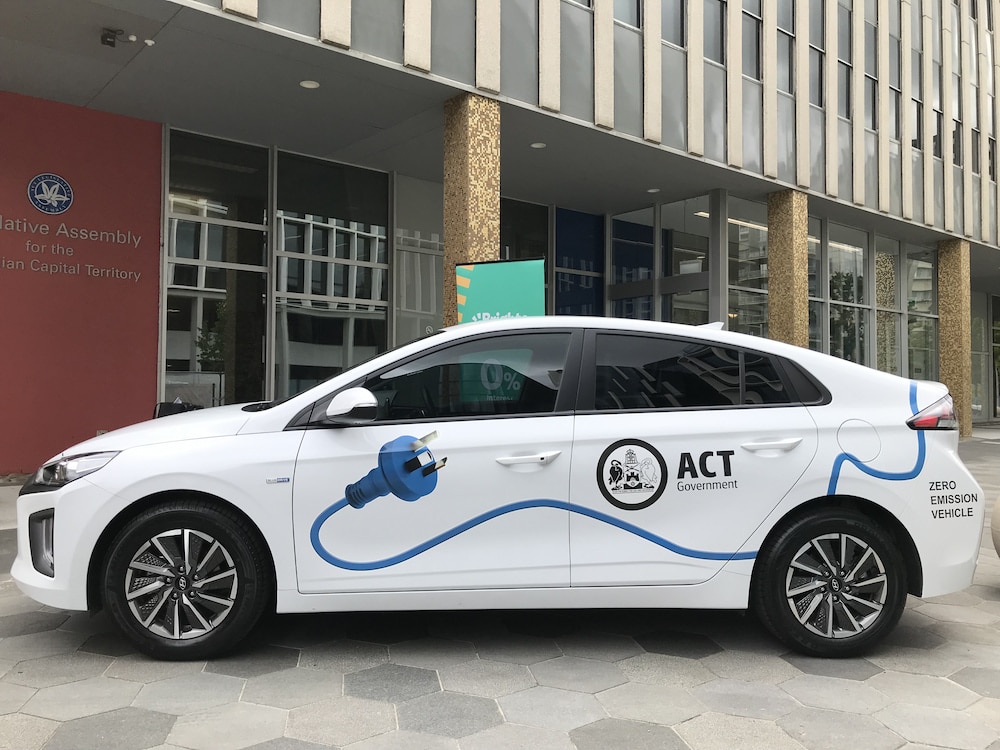Zero hour is coming for the petrol engine. Most of us would like an electric vehicle – clean, modern, environmentally friendly – but the price tag is too hefty for most of us; a new EV will cost you anywhere from $44,000 to a cool $200,000.
Yesterday, however, the ACT Government revealed a scheme that puts EVs in closer reach of the average Joe. Under the Sustainable Household Scheme, zero-interest loans of up to $15,000 are available for new and used zero-emissions vehicles (ZEV).
“Nothing will come of nothing,” once declared King Lear, but the ACT Government has proven him wrong. Paradoxically, delightfully, and in defiance of all well-behaved mathematics, adding zero to zero now produces something, and for a cost with fewer zeroes trailing after. And many think it’s far from a zero of an idea.
Canberran motorists, it seems, are eager to get behind the wheel of an EV: more than 2,300 people have already registered their interest to buy a vehicle under the scheme.
“Just a little while ago,” said Katherine McConnell, CEO of the government’s financial partner Brighte, “owning an electric vehicle seemed like something that wouldn’t be possible for years – but the future is here now. Both new and second-hand EVs are becoming accessible and affordable.”
“This will assist in accelerating the transition away from internal combustion engines into more sustainable forms of public transport,” said Chief Minister Andrew Barr, in his capacity as Minister for Climate Action.
The ACT Government wants to reach net zero by 2045, but 60 per cent of the ACT’s greenhouse gas emissions comes from transport; the fewer petrol cars and the more EVs there are on the road, the better for the environment.
“Providing cleaner forms of transport for people to get around this city is vital,” said Shane Rattenbury, ACT Minister for Emissions Reduction.
Electric vehicles provide most of Canberrans’ travel requirements, he believes; the average Canberran only drives 30km a day, so the owner of an EV would only need to charge it once a week. Mr Rattenbury bought himself an EV eight months ago – and he hasn’t visited a petrol station for a long time.
“[The EV] does everything I need it to,” he said. “I get around town. It’s lovely and quiet; it’s comfortable. It’s just like a normal car.”
Earlier this year, the ACT Government introduced zero stamp duty and two years of free registration for people newly registering new and second-hand EVs. In the last 12 months, the number of ZEVs registered in the ACT has doubled (1,000 by July, 1,562 today), and Mr Barr expected more frequent doublings over the next few years – a vista of multiplications of zeroes, all with a positive result.
Prices would fall over the next year, and already were, he said; the diversity of models on the market would increase; and many ex-government fleet and privately leased ZEVs would enter the second-hand market in the next three or four years. There are 174 ZEVs in the ACT Government’s fleet of 600 passenger vehicles, a spokesperson said; these will be leased for four years then sold into the second-hand market. One can already buy a second-hand EV for $18 to $20,000. Subtract the government’s $15,000, and the public could pay as little as $3,000 for an EV.
“With this interest-free loan, you almost need no money of your own to get a car that’s cheaper to get about town in,” Mr Rattenbury said.
The absolute tipping point and breakthrough moment would come when there were a lot of electric vehicles between $15 and $30,000, brand new, Mr Barr stated. That is still a few years away.
“But this scheme accelerates that tipping point, making it easier for Canberrans who are early adopters of new technology, who see the future, and who want to be part of it.”
The government will launch a tender for 50 public charging stations in Canberra, and wants to require new buildings to have them, too. More incentives will be revealed next year.
But ACT politicians are frustrated with the Federal Government’s indifference to electric vehicles. In fact, Australia has a reputation as “a uniquely hostile market”, the Electric Vehicle Council said earlier this year.
Last month, Australia did not sign a COP26 pledge to phase out petrol cars in developed countries by 2035, nor would it offer rebates or tax breaks for electric and hybrid vehicles. Unlike other OECD countries, the ABC reported, Australia does not have an emissions standard for car manufacturers, which makes it difficult for manufacturers to sell electric vehicles here.
Instead, the Federal Government expects that by 2030, only a third of new sales would be electric vehicles. Currently, less than 1 per cent of new sales are EVs – compared to 10 per cent in the EU, 11 per cent in the UK, and 75 per cent in Norway.
That is slowly changing, however. Now the local government has the country’s biggest fleet of electric cars, Mr Rattenbury said, overseas automakers feel it is worth exporting their vehicles to Australia. “We’re starting to see some concrete decisions in Australia,” they reportedly told him.
But it would be easier if the Commonwealth backed them.
“We’d be able to go even quicker, put our foot to the accelerator even more, if we had a Federal Government supporting the states and territories,” Mr Barr said. “At the moment, it feels like we are towing the Feds. If we were both heading in the same direction, more could be done a lot more quickly.”



